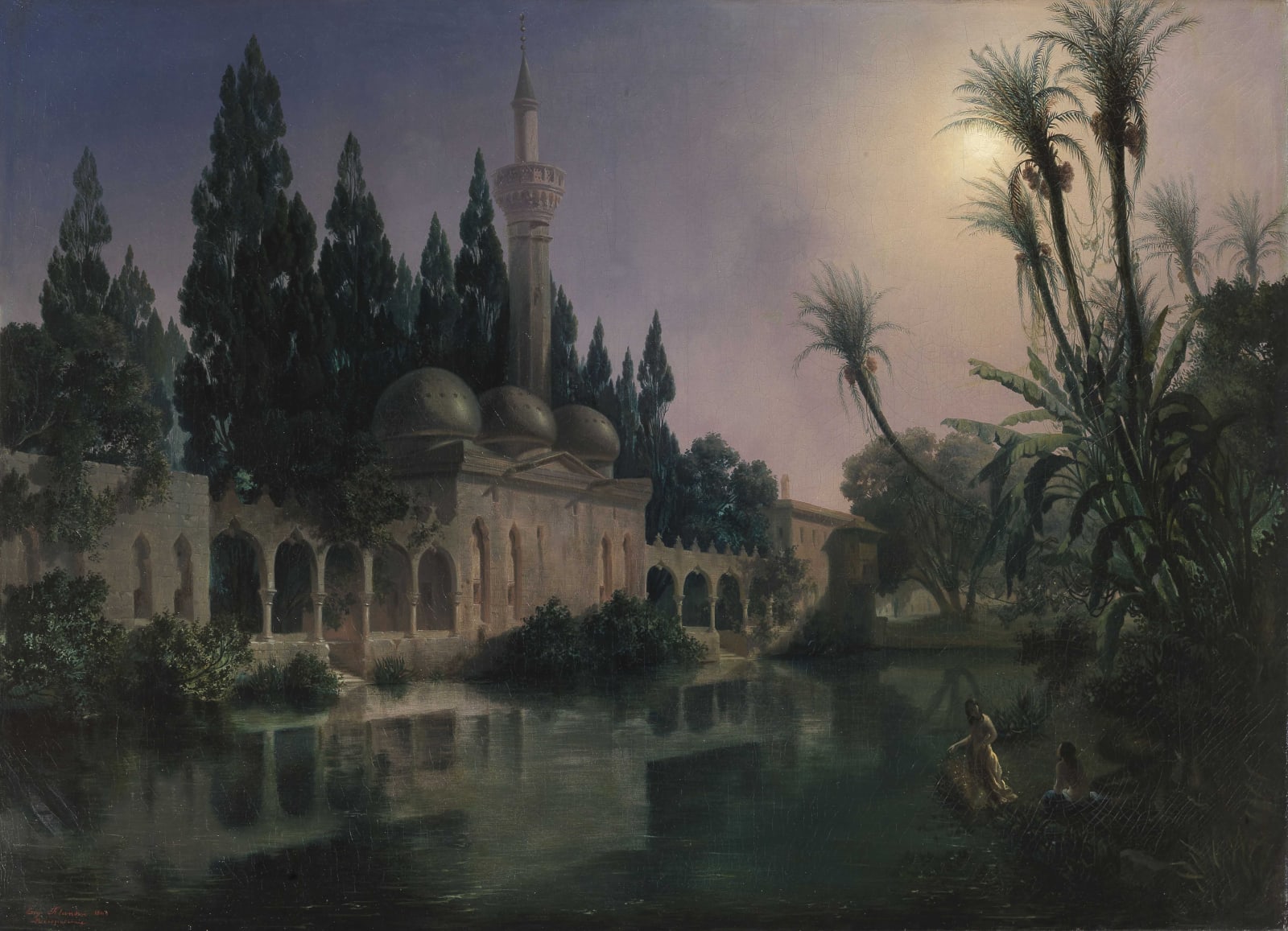-
Artworks

Eugène FLANDIN NAPLES 1803 -TOURS 1876
The Mosque of Urfa, 1849Oil on canvas73,2 x 100,4 cmSigned, located and dated lower left: Eug. Flandin Mésopotamie1849Further images
Provenance
Private collection, France
Eugène Flandin was born in Naples in 1803. A year after his debut at the Salon des Artistes Français in Paris, he accompanies the French army in its 1837 campain in Algeria. In 1840, Flandin and the painter-architect Pascal Coste are sent to Persia with the mission to gather information on the evolution of the country under Mohammad Chah Qadjar and to inventory the country’s ancient and modern monuments. In 1851 they publish an album in six volumes on their trip.
In 1844, Eugène Flandin goes to Mesopotamia with the architect and diplomat Paul-Emile Botta to find the lost city of Ninive the ancient capital of the Assyrian empire. Our painting, titled Mesopotamia and dated, 1859, corresponds to this trip. It depicts the mosque of the city of Urfa, in Turkey’s South-East, surrounded by the miraculous fountain of Callirhoé. This site, on the Silk Road, is a pilgrimage site for muslims. According to legend, the king Nemrod of Babylon condemned Abraham to the stake as he opposed himself to the cult of idols, which was practiced in the region. To protect Abraham, the flames transformed into fish, which became sacred and remain abundant in the fountain to this day.
Join the mailing list
Subscribe to our newsletter to receive all the news about exhibitions, fairs and new acquisitions!

